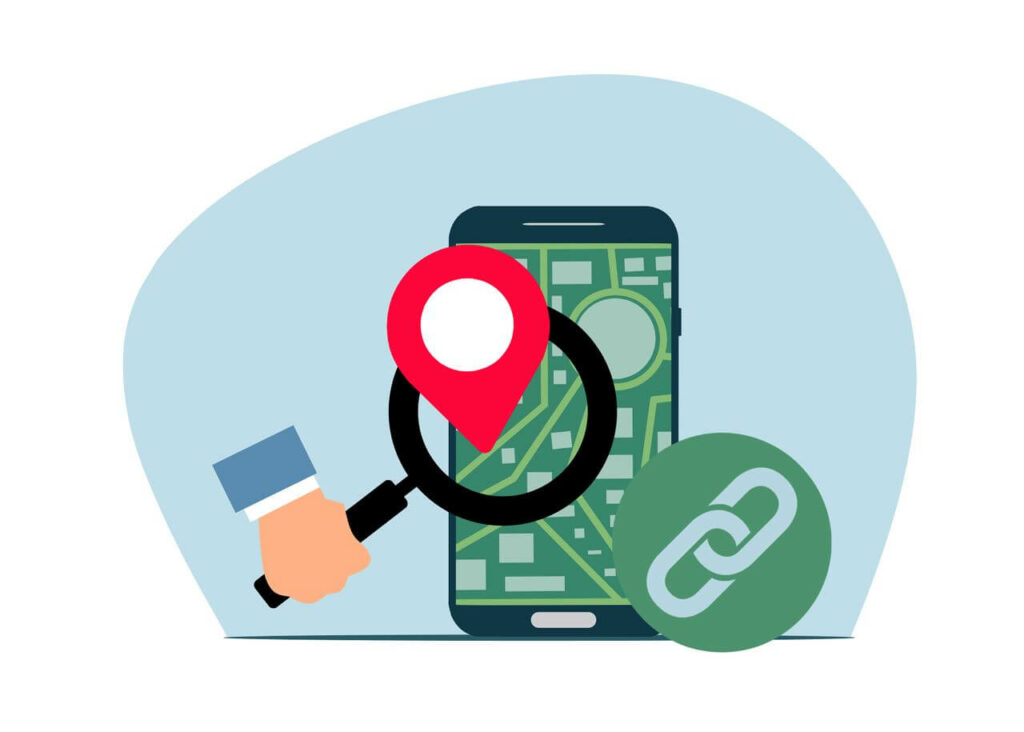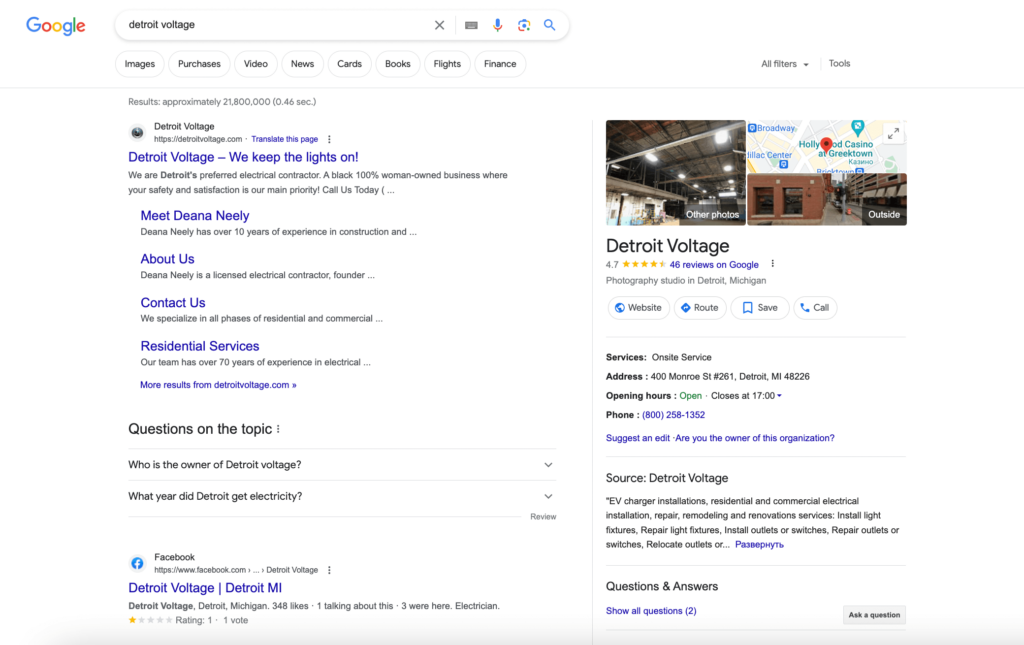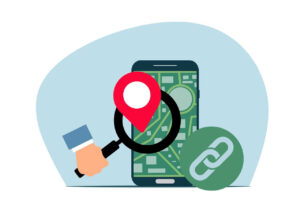
Consumers increasingly want to connect with local businesses. According to Google, searches including “near me” are increasing by 500% annually. What’s more, in 2021, 81% of consumers used Google to find information about local businesses.
So if you hope to reach local consumers, you need to make sure they can find your business online. You need to get your content to the top of relevant local Google search rankings.
One way to do this is to take advantage of link building, specifically link building for local SEO. Let’s take a look at how local link building works, why it’s important, and how you can start building your own backlink profile.
What is Link Building for Local SEO
Link building for local SEO is the process of getting backlinks from relevant local websites such as news sites, other local businesses, or local directories. The key to utilizing a local link is that it should come from a website specific to your area of operation.
The goal of local SEO link building is to increase your visibility in regular local search results and attract more traffic from local customers who are more likely to purchase from you.
A local business will only do business within their local space, so doing business in San Francisco and getting traffic from New York may end up being useless.
Why Local Link Building Is Important for SEO
All types of SEO are important in their way. Local links are also essential for ranking in Google. According to Moz, backlinks are one of the main ranking factors for local SEO.
There are three main reasons why local link building is important:
- 1. Google considers the number of backlinks when determining your page ranking. The more quality backlinks you have, the higher your chances of getting ranked on the first page. More than 67.6% of clicks come from the first five organic search results, while the number one search result in Google’s regular search results has a click ranking of 31.7%.
- 2. Link building for local SEO will help you attract specific, targeted traffic to your website from search engines. By targeting the right traffic, you’re more likely to attract people who are serious about making a purchase.
- 3. It’s also a great way to organically build your brand awareness. On average, it takes 7 brand impressions before someone takes action (marketing’s “Rule of 7”). Improving your brand visibility will help you attract potential customers.
- If you don’t have the time or resources to do local link building on your own, consider partnering with a SEO agency – it will be a smart move to promote your business.
7 Popular Local Link Building Strategies You Should Try
Like any link building, local SEO link building requires research, hard work, persistence, and creativity. Here are 7 local link building techniques to get you started:
1. Get links from local review websites
According to the study, 98% of consumers read online reviews of local businesses, and 85% of consumers are looking for high ratings. In other words, you need positive reviews, and you want them to be from websites that can help you achieve your local link building goals.
How do you get those customer reviews? You need to encourage existing customers to leave reviews. Allow customers to leave reviews on Google, Yelp, and other popular platforms. This could also be about forum backlinks.
Offer incentives, for example, a car rental company might offer reviewers a discounted rental, etc. Highlight customer reviews on your social media platforms – they create great user-generated content and often encourage others to leave their thoughts.
You can also contact local websites about listing your business. Most importantly, make sure you send a professional presentation, include relevant business information, and provide links to testimonials from your customers (if any).
2. Get listed in local business directories
According to research, 94% of consumers have turned to a business directory at least once in the past year to learn more about a new company.
To get the opportunity to build local leads, target directories, and list your company. Popular business directories include:
- • Google Business Profile
- • Bing
- • Yelp
- • Foursquare
If you want to find more local or niche directories, use Google – so write in the search bar, for example, “local small business directory in California” and choose from the options.
When you’re ready to submit to a local directory, follow their instructions carefully. Include key details such as your website and hours of operation, as well as a brief description of your business.
Each detail helps the directory verify your business, which can increase your chances of acceptance (and getting a backlink).
3. Hold special events and promotions to get PR links
Consider special events or campaigns. For inspiration, you can:
- • sponsor a local sports team;
- • hold a charity fundraiser;
- • run a workshop;
- • run a contest.
Or you can offer promotions such as a free product demo or seasonal discounts. It all depends on what makes the most sense for your business model.
Once you have chosen an event or promotion, you need to publicize it:
- 1. Do online research to find local news outlets such as local newspapers, radio stations, Facebook community groups, etc.
- 2. Decide which outlets to target based on your consumer audience. 96% of 18 to 25-year-olds and 87% of 55 to 66-year-olds check social media daily, so online platforms are a good place to start.
- 3. Write a brief press release. Include key events, details, and a backlink URL.
- 4. Remember to also include keywords in your press release.
4. Create a blog covering local topics
If you don’t already have a blog on your website, start one and focus on covering local topics. Blogging is worth the cost of building links for local SEO.
- • Blogging allows you to showcase your expertise, which increases consumer confidence and consequently encourages them to choose your brand over your competitors.
- • 60% of shoppers read blog posts early in the buying process.
- • Blog content is easy to share on social media. Over time, more reposts mean more visibility for your brand, which attracts more traffic.
When you’re ready to start your local blog, here’s how to get relevant backlinks to your posts.
- • Create great content. Spend time researching what your audience wants and create articles that meet their needs. If readers find your content useful, they will link back to it.
- • Try to get featured in news roundups. News roundups highlight great new content in a particular niche, and since authors are always looking for content to publish, there’s a good chance they’ll be able to offer a listing and a backlink.
- • Highlight your social media posts. The more people who share your content, the more likely you are to reach bloggers who are looking for content to link to.
- • Be active on the platforms (Twitter, LinkedIn, and Facebook). Build business relationships, establish yourself as a local expert and you will naturally get backlinks.
5. Find unlinked mentions of your brand and ask for links
Brand mentions without links can provide a great opportunity to get backlinks from high-quality authoritative websites.
First, it’s easier to send newsletters to a relevant contact if they already know your brand. However, there’s no need to track down every brand mention, especially if it’s on a low-quality website that won’t boost your rankings.
Here’s how you can find backlinks that are worth using:
- 1. Scan the Internet for unrelated brand mentions. For example, use the BrandMentions tool.
- 2. Identify the appropriate contact person to send the newsletter to (the website owner or someone in the marketing department). Find this information using LinkedIn or social media such as Twitter.
- 3. Send a newsletter. Compliment their company and thank them for mentioning your brand. Politely explain why adding a backlink would benefit their company and consider offering them a link in return.
-
6. Work to get mentioned by local publications and bloggers
- While PR campaigns are a good idea, you should also aim to get noticed more organically by local publications and bloggers. You don’t want every mention of your website to be about an event or promotional move. Instead, focus on building real connections with local bloggers.

You can also request to have your website added to reviews of local businesses that may already exist on their blogs. These types of posts tend to be published and then not updated for years.
So find local news summaries that have been published but not updated in the last 6 months or more and contact them. Remember, local publishers and content creators are always looking to partner with, you guessed it, local businesses.
7. Purchase domains in your industry
Did you know that as many as 70 percent of domains don’t renew after the first year? This opens up great opportunities for local businesses like yours to buy relevant domain names in your industry. You can do this on Whois.com, for example.
You can also purchase a website directly from the owner. This is sometimes called a domain name transfer agreement or a website asset transfer agreement. What’s the difference?
When you buy an obsolete domain, you can use the domain name to create a new website. You can also set it up as a redirect to your existing website.
When you buy a website from the owner, you usually purchase the domain as well as all of the content that currently exists on it.
While the price of completely taking over a website can be daunting, just consider the time and money you’ll spend inheriting all that valuable content. Not to mention, you retain domain authority and the content retains its publication date, which adds to the credibility of the site.
Thus, purchasing a domain can be important for two reasons:
- 1. obtaining links for promotion in highly competitive localization;
- 2. building a new website for a local SEO.
Before deciding to build a new local site, use Google Analytics to track the localization of website visitors.
Tips & Tricks to Build the Best Backlinks for Local SEO
Now we’ll share some tips and tricks to build the best backlinks for local SEO.
Create a Google Business profile
A Google My Business profile is a free listing that showcases your business information, such as your name, address, phone number, website, hours, reviews, photos, and more. It helps you appear in Google Maps, Google Search, and other Google products.

It also helps you get more visibility, trust, and traffic from potential customers. To create this profile, you need to verify your business with Google and fill out your profile with accurate and relevant information. You can also optimize it with keywords, categories, and attributes that describe your business.
Conduct local keyword research
Local keyword research means finding the words and phrases that your target audience uses to search for your products or services in your area. For example, if you are a plumber in New York, you might want to rank for keywords like “plumber in New York”, “emergency plumber in New York”, or “best plumber in New York”.
To conduct local keyword research, you can use tools like Google Keyword Planner, Bing Keyword Research Tool, or Moz Keyword Explorer. You can also analyze your competitors’ websites and see what keywords they are ranking for. All these keywords can be used in your website content, title tags, meta descriptions, headings, and URLs.
Create local content
Local content should be relevant and useful for your local audience. For example, you can create blog posts, videos, infographics, guides, case studies, or testimonials that showcase your expertise, experience, or success stories in your area.
You can also create content that answers common questions, solves problems, or provides tips and advice for your local customers. It helps you establish your authority, credibility, and reputation in your niche. This way you attract more organic traffic, social media shares, and backlinks from other local websites.
Build relationships with local influencers
It’s about link building outreach. Find out who has numerous devoted followers in your area. In addition to the bloggers mentioned above, these could also be journalists, podcasters, YouTubers, or social media personalities. Local influencers can help you reach a larger, more engaged audience, increase your brand awareness, and generate more referrals and leads.
To build relationships with local influencers, you can follow them on social media, comment on their posts, share their content, or send them personalized emails.
You can also offer them something of value, such as a free product, discount, guest post, or review. You can then ask them to link to your website, mention your brand, or promote your products or services.
Backlinks for Local SEO: Final Thoughts
As we’ve found out, local link building is a great way to improve SEO, increase search engine visibility, and attract relevant traffic to your website. Yes, you won’t see results overnight, but you should consider link building as a key part of your long-term marketing strategy.
You don’t have to try all the local link building tips we’ve suggested – start with the strategies that best suit your business, and in between focus on creating regular, high-quality blog content to increase your brand credibility.
If you need extra help with link building for local SEO, use link building services from Mellow Promo to boost your local rankings.





